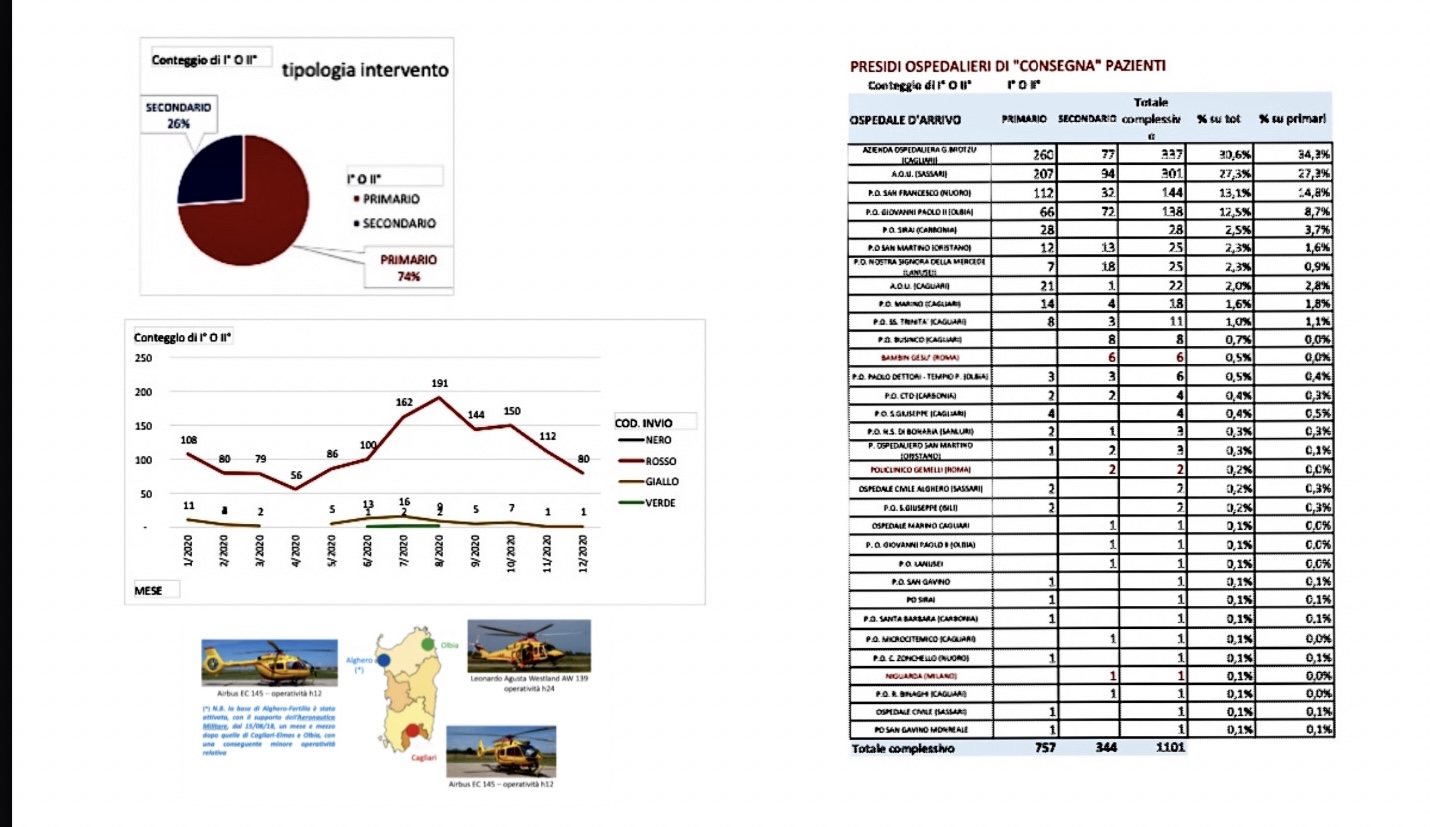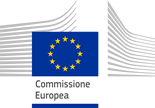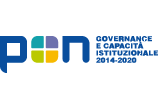
In 2020, Areus, the Regional Emergency Company, recorded 1.700.000 telephone calls to the operations centre of 118: there were 1626 helicopters interventions.
The three graphics show the numbers of flights, primary and secondary, that have been performed in Sardinia in 2020.
The flights are divided into two different types of interventions:
- primary flights (HEMS): the helicopter is sent directly to the scene of the accident or illness, possibly at the same time as other vehicles or rescue teams, even in harsh environments where the winch is used to reach the patient, as it is not possible to make a landing.
- secondary flights (HAA): the helicopter is used to transport a critical patient from one hospital to another, typically to a hospital with specialist facilities not available in the sending city.
In the first graphic we can see that in 2020 there was a higher percentage of primary flights (74%) than secondary flights (26%).
The second one shows us how many flights have been done every month during the year and the code of the interventions.
Most of the codes were red, remembering that the red are the most serious ones: we can see from the red line in the graphic that they reach their peak during August in summer, when Sardinia population doubles for some weeks.
Additionally from the analysis of the data of the emergency medical intervention, it emerges that in summer: in particular between July and September, primary interventions were at 40%.
In the third graphic the destination hospitals for flights are represented: Nuoro is the third hospital after the Brotzu of Cagliari and the Aou of Sassari, with 112 primary flights and 32 secondary flights with 13,1% of the total.
Furthermore, we discovered that the service is organised through three modern helicopters: two EC 145-T2 located in the bases of Alghero and Cagliari-Elmas that operate from sunrise to sunset (up to a maximum of 12 hours per day), while just the helicopter AW 139 stationed in Olbia is active 24/7, for day and night flights.
Considering all data, the fact that the secondary flights are less used than the primary ones, allows us to understand that we mostly use ambulances to transport patients and given our geography and our roads, maybe we should use the helicopters, especially when patients have to be moved from one hospital to another.
In conclusion, we noticed that helicopters might be increased, especially in summer when we have more people on our island and we should be able to equip them to save as many people as possible.














